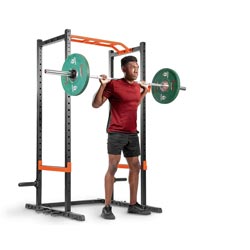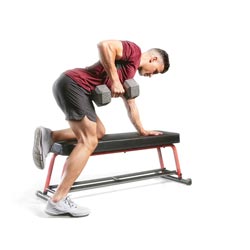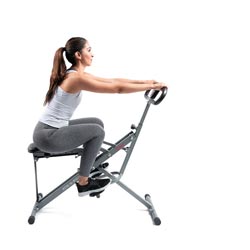Resistance training can be a method used to sculpt physiques with and boost physical performance. But how does your body gain muscle, anyway?
Resistance Training
Researcher have found that resistance training can have positive effects on your body, including increased lean weight, metabolic rate, and cognitive abilities—along with several other benefits. However, other studies demonstrate that inactive adults who do not participate in regular resistance training activities have seen a 3 percent to 8 percent decline in muscle mass every decade.
Muscle-Building Process
Your body is composed of lean body mass and fat. Muscle is one component of lean body mass that you can alter in terms of size and function throughout your body. Hair, skin, nails, organs, and bodily fluids also make up lean body mass—but changing those is a whole different process.
The initiation of exercise-induced muscle growth is a process. It starts with mechanical tension, which comes from an external force, like lifting weights. For example, when you raise a dumbbell, it acts on the mechanical structures of the body (muscle, tendons, ligaments, and bone). This tension disturbs the integrity of the muscle and causes a cascade of events to help the body respond to this external force. In response to the tension, your body will experience muscle damage (tearing of muscle fibers). After your workout, your body will begin to repair damaged muscles. This marks the stimulation of cellular growth in your muscle tissue.
Lastly, the body repairs and grows muscle tissue with increased metabolic stress. This process includes an accumulation of certain substances that promote muscle repair, including lactic acid. You may have felt the effects of metabolic stress if you have ever experienced a burning sensation in your muscles while performing strenuous exercises.
Resistance Training Variables
When mechanical tension, muscle damage, and metabolic stress are initiated, muscle growth can begin. But in order to initiate the muscle growth process, you can’t just perform any type of exercise or resistance training. Specific training variables must be followed in order to see gains.
Exercise intensity helps promote muscle growth. More specifically, the intensity is determined by the number of repetitions you can perform with a chosen weight. For example, if you can do 30 repetitions of an arm curl with a 5-pound dumbbell, the intensity of that exercise is not high enough to produce a muscle growth response. Researchers have found the ideal range of repetitions to be in between 6 and 12 repetitions.
The next variable is the volume of an exercise, which is the total number of repetitions and sets of repetitions you perform during a workout. While it is possible to simulate a muscle growth response with one set, it has been consistently proven that multiple sets are superior over single set protocols with respect to muscle growth (muscle hypertrophy).
The amount of rest you take in-between sets of exercises can also influence your body’s ability to build muscle. Researchers have found relationships between longer rest periods and enhanced muscular hypertrophy and strength. Rest periods can be classified into three categories: short (30 seconds or less), moderate (60 to 90 seconds), and long (3 to 5 minutes). In a separate study, there has been a positive relationship between the moderate rest period rates and muscular growth.
Exercisers looking to increase muscular growth should also take into consideration the frequency that they train their muscles. There is evidence that supports training muscle groups twice per week as the most effective way to train muscle groups, compared to only training once a week.
So How Can You Do It?
There’s a lot more to muscle than just participating in resistance training. Achieving muscle gains, sculpting your body, and improving your fitness is the result of hard work and muscle repair. However, there is a strong relationship between muscle gains and workout programs that follow specific guidelines.
Want to get a head start on a new resistance training program? Get a quick and free full-body workout when you perform the exercises in this video. You can also follow along this strength-enhancing set to target muscles in your lower body.























